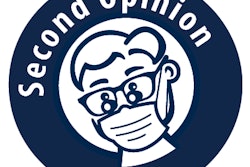
Instituting dental quality measures has become important in recent years to improve outcomes and patient experience and reduce costs. However, some unexpected consequences and challenges of such programs have emerged.
Dental quality researchers from the University of California, San Francisco (UCSF) discussed their observations of problems with dental quality measurement, including the incentivization of unethical behavior, a de-emphasis on patient-centeredness, and the risk of alienating smaller dental offices, in an article published in BMC Oral Health (March 1, 2019).
"As quality measurement evolves, the challenge of the dental reimbursement structure and payment mechanisms cannot be ignored," wrote the authors, led by Enihomo Obadan-Udoh, DDS, DMS, MPH, an assistant professor in the department of preventive and restorative dental sciences at the UCSF School of Dentistry.
The problems with quality measurements
The dental profession in the U.S. needs to shift from an understanding of quality assurance as encompassing risk management, quality control, and quality assurance to more of a holistic and systems level focus that examines both continuous quality improvement and learning, the authors noted. In recent years, the Dental Quality Alliance, researchers, and some state dental programs have developed quality measures with the goal of improving outcomes and the experiences of patients and reducing costs.
“Our ultimate goal is to ensure the delivery of high-quality, patient-centered dental care and effective quality measurement is the first step.”
The authors believe that dental providers must support the use of these quality measures to achieve the six domains of quality described by the Health and Medicine Division (formerly the Institute of Medicine) of the National Academy of Sciences, Engineering, and Medicine: safety, timeliness, efficiency, effectiveness, efficacy, and patient-centeredness.
The authors' research team has been working to convert dental quality measures into diagnoses-centered e-measures present in electronic health records. However, in the course of this work, they found that the adoption of quality measures in dentistry has led to some undesirable results, including some avoidable problems experienced by the medical profession in adopting these measures.
One such issue is that process-based dental quality measures can de-emphasize patient-centeredness, even though this is a key component of quality care. Improvement in a patient's oral health outcome should always drive the dental care delivery process, the authors noted. However, procedure-based process measures are often used as dental quality measures, and this can make tracking desired dental outcomes, such as a disease-free mouth or improved well-being, difficult following the procedure and promote a culture focused on interventions instead of patients, outcomes, and prevention, they wrote.
Relatedly, fee-for-service payment systems and the lack of mandatory diagnosis codes can incentivize dental providers to complete unnecessary procedures and disincentivize the delivery of high-quality, indicated care, the authors explained. "Pay-for-performance" or "value-based payments" systems, on the other hand, can encourage the delivery of high-quality care yet are not widespread and can be gamed by providers who cherry-pick patients expected to have better outcomes or lower risk. The prevalence of out-of-pocket payments and practices receiving reimbursement from multiple insurers can further complicate the use of performance-based systems.
Another problem the authors identified was that plan-level quality measures can interfere with provider and patient autonomy. Providers may be focused on patient outcomes, while plans may be more focused on saving money. For example, some patients may prefer to undergo procedures that are not conventional or routine and may not be covered by some dental plans, but satisfying the needs or preferences of such patients may cause providers to receive low ratings by dental plans for not following conventional practices.
In response to such a system, some providers inaccurately code procedures or perform procedures that don't meet patient needs or may lead to poor outcomes to follow plan recommendations.
What changes are needed?
One pitfall of current dental quality measurement data collection is that the information often is primarily used by dental payment organizations, whereas it could be put to greater use by being shared with providers and patients, the authors wrote.
In addition, the time currently required to collect data on quality is too much for many small-group or solo practices, they noted. More attention should go toward developing e-measures that allow for data to be easily pulled from electronic health records, the authors wrote.
They recommended that dental practitioners get on board with quality measurement as the medical profession has done and that diagnostic terminology become standardized throughout dentistry to be able to better measure appropriate treatment and outcomes.
"Our ultimate goal is to ensure the delivery of high-quality, patient-centered dental care and effective quality measurement is the first step," the authors concluded.



















